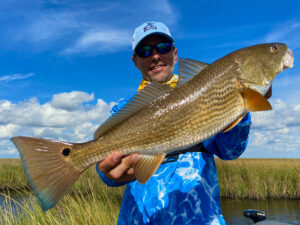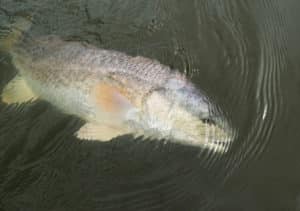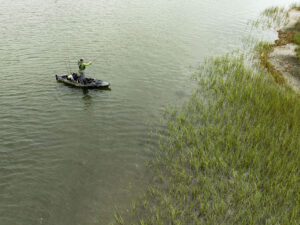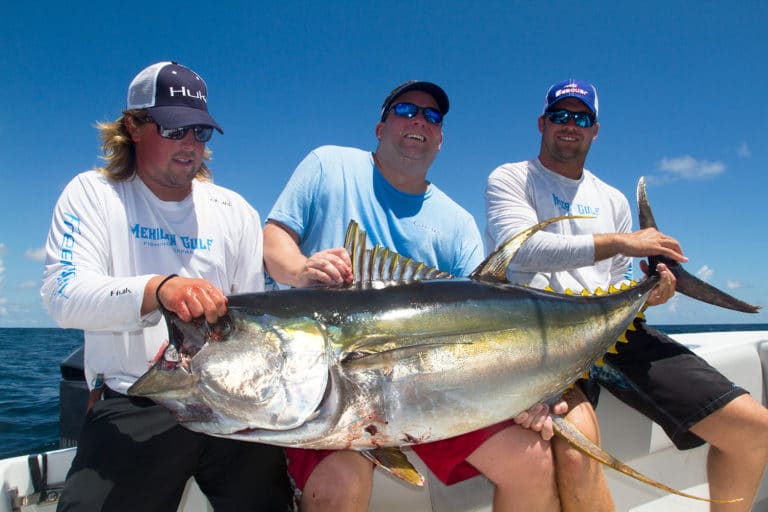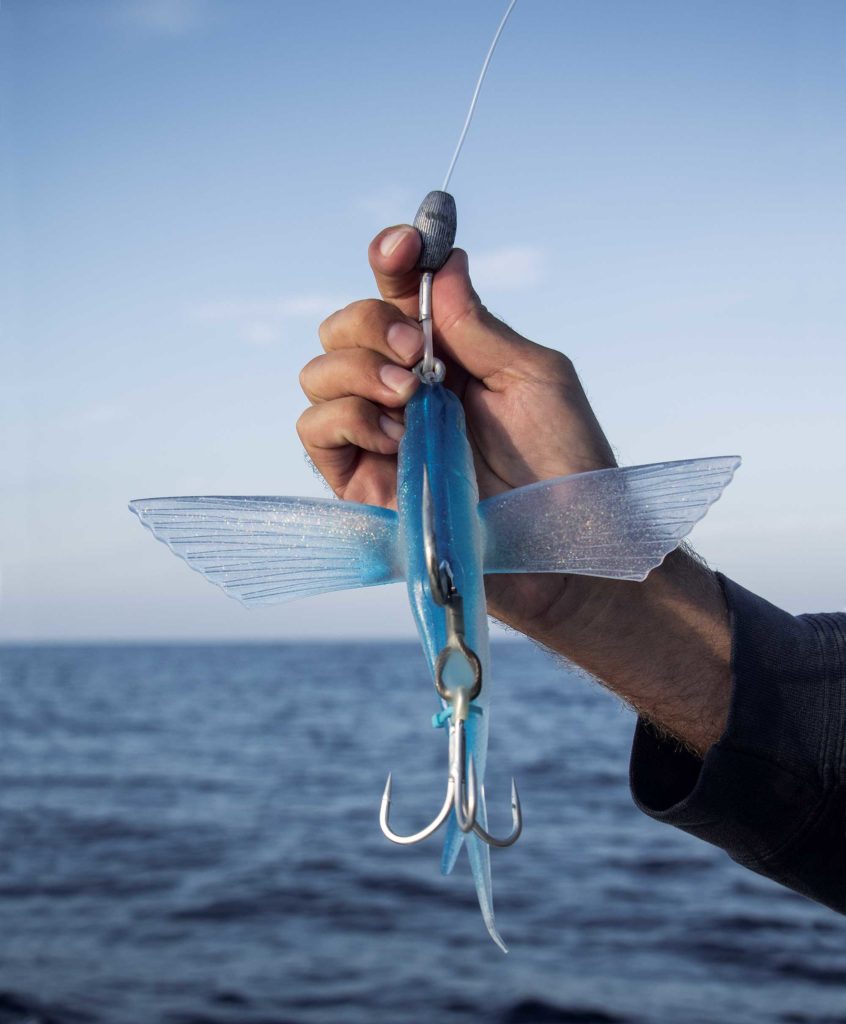
The origins of kite-fishing predate European contact with native Polynesians, who used rudimentary kites to move their live baits beyond distant surf lines. During the pre-World War II days of sport fishing on the West Coast, “Tuna” George Farnsworth dangled live sardines from kites for tuna and billfish near Catalina Island off California. And for the past 60 or so years of kite-fishing in Florida waters, scores of goggle-eyes and blue runners have been hung from kites on a near-daily basis.
Kites deploy live baits, and they do it quite effectively. Recently, however, an expanding number of anglers have discovered the advantages of kite-fishing with artificial lures. These artificials are commonly trolled as opposed to being dangled while adrift, or while holding station. In fact, many professionals agree that in the right place, at the right time, when you have the right conditions, kite-fishing with artificials can kick live bait’s butt.
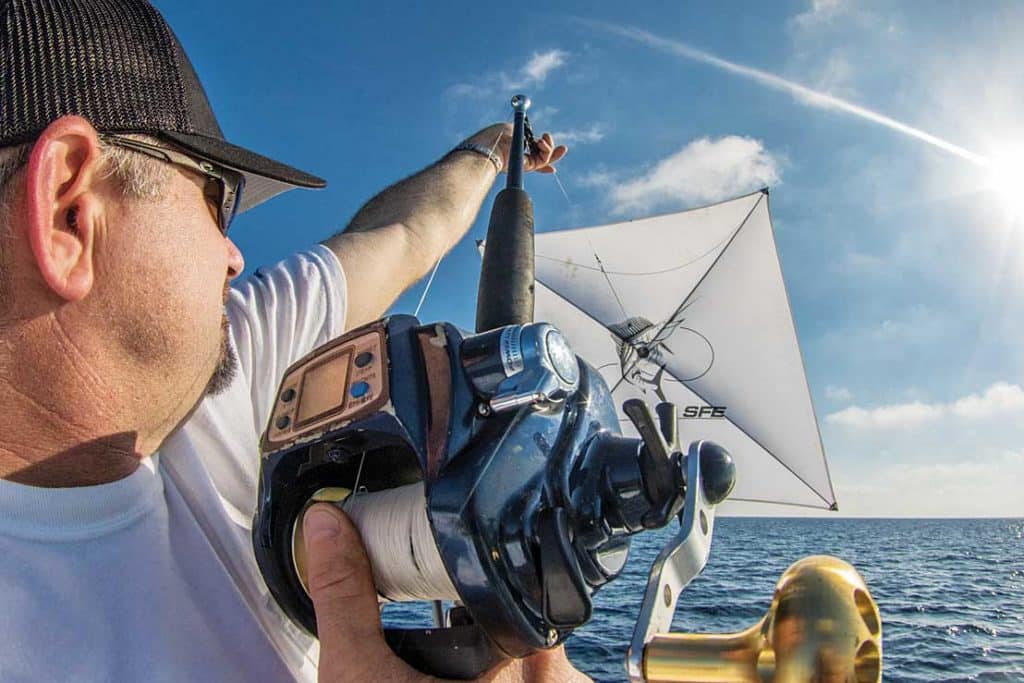
Trolling with Artificial Lures from a Kite
Kite-fishing with lures involves different techniques than live-baiting because the boat is always trolling at 6 or 7 knots. Captains fly only one kite at a time and use only one line at a time. They employ either a standard square kite, such as those made by AFTCO and Bob Lewis, or a foil-style or sled kite, such as the Boston Big Game Fishing Club kite, which can fly in a wide range of wind conditions. Captains also crank down on the release-clip tension because the tuna often smack the lure several times before managing to engulf it.
Virtually any pelagic predator might hit a kite-fished artificial on any given day. But when we talked with pros from different parts of the country, they all stated that they kite-fish with artificials only when targeting tuna.
“Yes, sure we’ve had mahi, sailfish, and even blue marlin hit a kite bait,” says Capt. Chris Kubik, of Point Runner Charters, out of North Carolina’s Oregon Inlet. “But this technique is really all about the yellowfin. It’s an extremely effective method of fishing during the summer, when yellowfin are in blue water eating flying fish. They can get kind of sketchy, and sometimes getting your lure far away from the boat with a kite is the best move.
“You need to get the lure far from the white water, off to the side of the boat, and let out just enough line that it skips—not drags—across the surface. This can mean making constant adjustments to the kite and to the fishing line.”
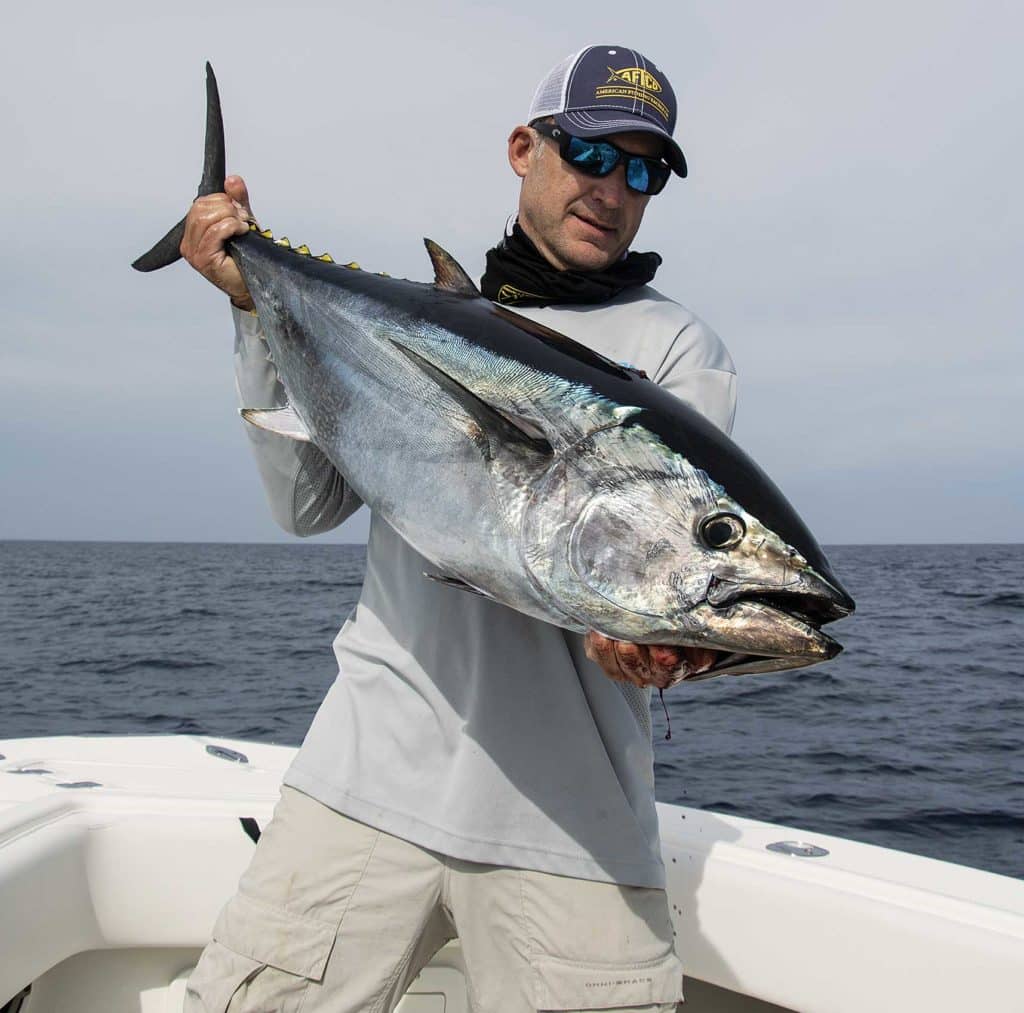
Far to the south of Kubik, Miami’s Capt. Bouncer Smith also fingers tuna as the prime target. “In our area, this is a very targeted, very specific way of fishing that is almost exclusively for yellowfin and blackfin tuna,” Smith says. “April, May, and June, especially, when there are a lot of blackfin around, is when you want to try this. Sure, occasionally a mahi or a sailfish will join the party, but they’re just a bonus.”
More than 2,700 miles away, on the opposite side of the nation, in Huntington Beach, California, Capt. Mark Smith, the owner of CharkBait, also flies artificials from kites specifically to tempt tunas. “It’s unusual for bluefin to spend so much time in our waters,” Smith explains. “But for four years now, they’ve been around in really good numbers. For a while they were oriented deep, and jigging caught the fish, but then two years ago, the tuna seemed more oriented toward the surface. And it was trolling plastic flying fish from kites that got them biting. Some guys in the know had been doing it for a while, but the popularity of the tactic just became explosive.”
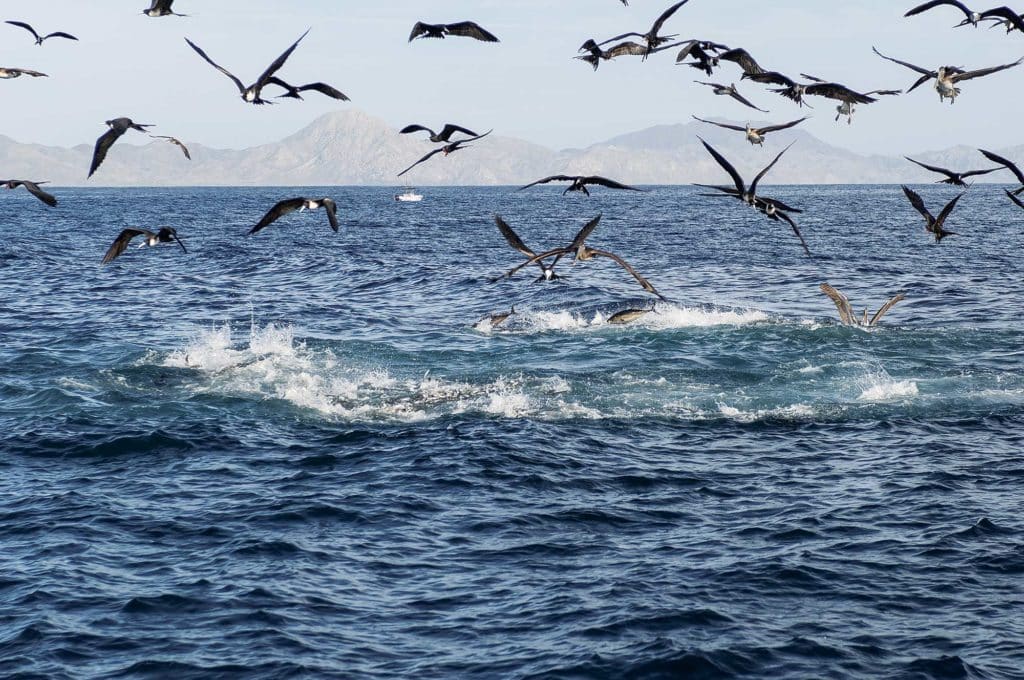
Kite Fishing Causes A Surface Disturbance
Smith’s use of the word “explosive” doesn’t just denote the sudden popularity of the method on the West Coast, but it’s also an indication of why the method has become so popular, regardless of where it’s being applied.
“It’s always more exciting to see a big surface explosion,” Smith says, “and fishing this way is sort of like a recreational take on green-sticking. The lures are right at or even over the surface, so fish almost always blow up when they hit.”
All three of these captains agreed that the tactics producing the best results also tend to produce the most adrenaline-inducing eruptions. “Your lure—and we usually use a soft-plastic flying fish—should always be in blue water, not the white water behind the boat,” Kubik advises.
If it’s really calm, Capt. Bouncer Smith adds, “and there aren’t enough waves for the flying fish to come out of the water and skitter across the surface, you need to jerk the line and make it happen. It should be really flying, maybe going 10 to 15 feet before it touches the water again.”
Read Next: Kite Trolling for Pacific Bluefin Tuna
Why not use live baits from the kite in this situation? These captains noted that a live bait doesn’t stay alive very long if you skip it from a kite while trolling, and that rigged dead baits aren’t nearly as durable as plastics for this purpose. The experts also noted that sometimes when live baits aren’t readily available, the kite-skipping artificial technique can be used as a backup.
But whatever the reason for kite-fishing with artificials might be, one thing seems apparent: No matter where you live, if tunas prowl your home waters, chances are there will be a time and a situation in which a kite-trolled artificial will be the most effective offering.
Flying Fish Lures
Anglers won’t find a wide range of artificials from which to choose for kite-fishing: Carolina Lures’ Yummee Flying Fish was often mentioned as the go-to. Huntington Beach, California, Capt. Mark Smith, whose company—CharkBait (charkbait.com)—produces its own plastic flying fish, unsurprisingly uses his own version.
“We came up with the design specifically to get the leader out of the water,” says Jim McKeral, purveyor of Carolina Lures. “Sometimes in clear blue water, the yellowfin won’t hit anything with heavy leaders, and in the past, we were using some ridiculously light line just trying to get bites. We knew skipping the lure from a kite would get the leader out of the water, and flying fish naturally jump out of the water when tuna are chasing them.”


